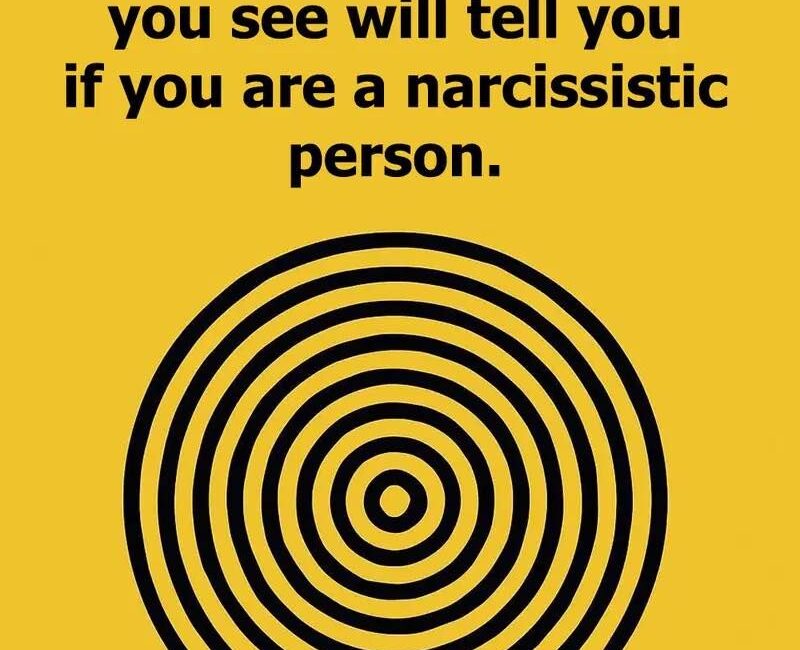This middle ground is often considered the ideal balance between self-esteem and self-reflection.
🟢 10 or More Circles: The Detail-Oriented and Humble Thinker
Seeing 10 or more circles suggests that you:
- Are highly observant and analytical.
- Pay great attention to fine details.
- May be self-critical or perfectionistic.
- Derive confidence from internal validation and actions rather than external praise.
- Tend to be humble, introspective, and less prone to narcissistic traits.
This personality type focuses on substance over showmanship, valuing depth and precision.
Is This Test Scientifically Valid?
While the viral test is compelling and fun, it’s important to clarify its scientific limitations:
- No formal psychological validation: There is no peer-reviewed study proving the correlation between circle perception in this illusion and narcissism.
- Individual variability: Visual perception can be affected by many factors including screen resolution, lighting, eyesight, fatigue, and cognitive state.
- Simplification of personality: Personality is complex and multi-dimensional; reducing it to a single test oversimplifies human psychology.
However, the test’s popularity highlights the fascinating interplay between visual cognition and personality self-perception. It’s a reminder that how we see the world often reflects how we see ourselves.
The Neuroscience Behind Visual Illusions and Personality Reflection
Why are we drawn to illusions that seem to reveal personality traits?
- Brain’s pattern recognition: The brain constantly organizes sensory input to find meaning, sometimes filling gaps or misinterpreting signals.
- Self-referential processing: When presented with ambiguous stimuli tied to personality, people engage introspection — they try to understand what their perception says about their identity.
- Emotional engagement: Such illusions tap into curiosity, surprise, and self-assessment — powerful psychological motivators.
Research shows that the prefrontal cortex, involved in decision-making and self-reflection, activates when people interpret ambiguous stimuli with personal relevance.
How Optical Illusions Enhance Cognitive and Emotional Awareness
Visual illusions like the circle test do more than just entertain:
- They improve concentration by forcing us to slow down and analyze details.
- They train pattern recognition skills.
- They promote mindfulness — being present and observant.
- They spark emotional insights and open pathways for self-reflection.
Cultural and Social Media Impact of Visual Personality Tests
The viral spread of this illusion reveals much about digital culture:
- Shareability: Simple, intriguing tests are perfect for social media sharing.
- Community engagement: People love discussing their results and comparing perceptions.
- Identity exploration: Online quizzes and tests allow users to experiment with self-identity safely.
- Conversation starters: These illusions open discussions about mental health, personality, and self-awareness.
Tips for Taking Such Visual Personality Tests
If you want to try this or similar tests seriously, here are some tips:
- Use a high-quality display: Better resolution helps spot finer details.
- Ensure good lighting: Avoid glare or reflections.
- Relax your eyes: Don’t strain; blink regularly.
- Focus and refocus: Let your eyes scan the image slowly.
- Don’t rush: Take your time to count carefully.
- Reflect on the results: Regardless of the number, consider what the process made you feel or think about yourself.
Beyond Narcissism: What Other Traits Might Visual Perception Reveal?
Visual perception tests sometimes correlate with traits such as:
- Attention to detail
- Creativity
- Cognitive flexibility
- Impulsivity or patience
- Stress response
- Emotional regulation
While these tests are not definitive diagnostics, they can offer insights into cognitive styles that influence personality and behavior.
Final Thoughts: What Matters Most Is the Reflection, Not the Result
The viral circle illusion and its associated personality interpretations remind us that perception is subjective and multi-layered. The number of circles you see might be interesting, but the greater value lies in:
- How you approach challenges.
- Your willingness to explore your own mind.
- The curiosity to understand both the world around you and yourself.
Whether you saw fewer than 7 circles or more than 10, the true takeaway is the invitation to pause and reflect.
Interactive Challenge: How Many Circles Do You See?
Before concluding, take a moment. Look back at the illusion image (if you have it handy) and count the circles you perceive. Write down your number. Then, think about which description fits your personality best.
Are you a confident leader, a balanced thinker, or a humble observer? Or perhaps a bit of all three?
Frequently Asked Questions
Q: Can visual illusions be used for psychological diagnosis?
A: Not reliably. They can offer clues but are not substitutes for clinical assessments.
Q: Can I improve my visual perception skills?
A: Yes. Activities like puzzles, reading, meditation, and practicing illusions can enhance visual and cognitive abilities.
Q: Why do some people see different numbers of circles?
A: Factors include focus, visual acuity, screen quality, and cognitive processing differences.
Keywords Included (For Search Engine Optimization)
- Narcissism test
- Optical illusion personality test
- Visual perception test
- How many circles do you see
- Concentric circles illusion
- Narcissism spectrum
- Personality traits and visual tests
- Cognitive styles and perception
- Self-awareness quiz
- Viral social media test
If you enjoyed this article, feel free to share it with friends and test their circle-spotting skills! Let us know how many circles you saw and what you think about the personality interpretations.




